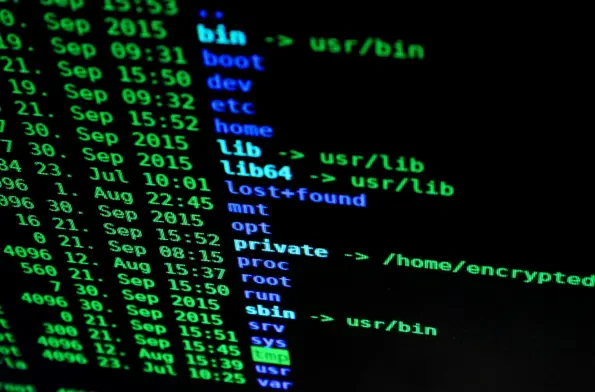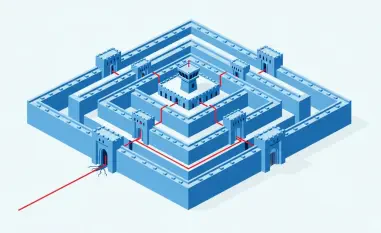In an era where enterprise ecosystems are increasingly intertwined with IoT, OT, and mobile systems, the cybersecurity landscape faces unprecedented challenges, with attack surfaces expanding at an alarming rate, posing significant risks to businesses. A staggering volume of over 500 trillion daily signals and 20 million mobile-related threats paint a vivid picture of the dangers confronting organizations today. This review dives into Zscaler Enterprise Security, a cloud-native platform designed to tackle these modern threats head-on, offering a glimpse into how it stands as a bulwark against sophisticated attacks. The analysis will explore its core features, real-world impact, and potential to redefine cybersecurity standards for interconnected environments.
Overview of Zscaler’s Security Platform
Zscaler Enterprise Security emerges as a pivotal solution in the realm of cybersecurity, specifically engineered to protect the complex web of IoT, OT, and mobile systems that define modern enterprise networks. Unlike traditional security models reliant on perimeter defenses, this platform operates on a cloud-native framework, ensuring scalability and adaptability in dynamic digital environments. Its relevance is underscored by the surge in threats accompanying digital transformation and the widespread adoption of hybrid work models, which have blurred the lines of conventional security boundaries.
At the heart of Zscaler’s approach lies its commitment to safeguarding interconnected systems that are often prime targets for malicious actors. The platform addresses vulnerabilities in devices ranging from industrial control systems to personal mobile gadgets, providing a unified defense mechanism. This holistic perspective is vital as enterprises grapple with the integration of diverse technologies, each introducing unique risks that demand innovative protective measures.
Key Features of Zscaler’s Security Solutions
Zero-Trust Architecture
Central to Zscaler’s offerings is its zero-trust architecture, a paradigm shift from outdated security models, assuming that breaches are not just possible but inevitable. This approach prioritizes preventing lateral movement within networks by enforcing strict identity verification and access controls, regardless of a user’s location or device. It effectively minimizes the damage potential of a compromise by isolating threats before they can spread across interconnected systems.
The zero-trust model proves particularly impactful in environments with IoT, OT, and mobile integrations, where traditional defenses often fall short. By ensuring that every access request is thoroughly vetted, Zscaler creates a robust barrier against unauthorized intrusions, even in sprawling enterprise setups. Performance assessments indicate strong capabilities in securing access while swiftly isolating compromised devices, thereby reducing the risk of widespread network infiltration.
This feature stands out as a proactive measure, aligning with the industry’s move toward segmented security frameworks. Its ability to adapt to varying threat levels ensures that enterprises can maintain operational integrity, even under persistent attack scenarios. Such resilience is a cornerstone of Zscaler’s appeal in high-stakes cybersecurity contexts.
Comprehensive Device Visibility
Another standout feature of Zscaler’s platform is its ability to provide comprehensive visibility into all connected devices, encompassing managed, unmanaged, and elusive shadow IoT systems. This capability is crucial in detecting hidden vulnerabilities, especially in cellular IoT and mobile setups that often evade traditional monitoring tools. By mapping out the full spectrum of network endpoints, the platform significantly reduces blind spots that attackers might exploit.
The significance of device visibility becomes evident in its role in shrinking the attack surface through continuous monitoring and real-time threat identification. Enterprises benefit from actionable insights into potential weaknesses, allowing for preemptive measures against emerging risks. This feature is particularly valuable in sectors where untracked devices could serve as gateways for malware or data breaches.
Real-world applications of this functionality demonstrate its effectiveness in bolstering security across diverse environments. Whether dealing with remote IoT deployments or sprawling corporate networks, Zscaler’s monitoring tools ensure that no device goes unnoticed, providing a critical layer of defense. Such thorough oversight is indispensable in maintaining robust cybersecurity postures in today’s interconnected landscape.
Recent Innovations in Zscaler’s Technology
Zscaler continues to push the boundaries of cybersecurity with recent advancements tailored to address the evolving nature of digital threats. Innovations in threat detection, particularly for Android malware and IoT-specific attacks, showcase the platform’s ability to stay ahead of sophisticated attack vectors. These updates enhance protection against malware families that dominate the IoT landscape, ensuring enterprises are equipped to handle targeted assaults.
Emerging trends, such as the convergence of threats across IoT, OT, and mobile systems, have prompted Zscaler to develop unified defense strategies. This shift acknowledges the interconnected nature of modern attacks, where a breach in one system can cascade across others, amplifying damage. The platform’s response includes integrated solutions that tackle cross-domain vulnerabilities, reflecting a forward-thinking approach to enterprise security.
Additionally, Zscaler has adapted to the increasing complexity of attack methods, including social engineering and permission abuse tactics. Enhanced detection mechanisms counter these subtle yet devastating strategies, protecting users from schemes that exploit trust or access privileges. This focus on nuanced threat mitigation underscores Zscaler’s commitment to evolving alongside the cybersecurity challenges of the current digital age.
Real-World Applications and Industry Impact
Across various sectors, Zscaler’s deployment has proven transformative, particularly in industries like manufacturing, energy, healthcare, and education, where cybersecurity risks are heightened due to critical infrastructure and sensitive data. In manufacturing, for instance, the platform secures OT systems against malware targeting industrial controls, preventing costly disruptions. Similarly, in energy sectors, it safeguards vital systems from attacks that could compromise public safety.
Healthcare organizations benefit from Zscaler’s ability to protect patient data amidst the proliferation of connected medical devices, a growing concern in the sector. Educational institutions, experiencing sharp rises in threats due to rapid IoT adoption, rely on the platform to secure digital learning environments. These examples highlight Zscaler’s versatility in addressing industry-specific challenges with tailored security measures.
Unique use cases further illustrate its impact, such as securing remote cellular IoT devices in rugged environments and supporting BYOD policies in hybrid work settings. These applications demonstrate how Zscaler adapts to diverse operational needs, ensuring protection without hindering productivity. Its influence across asset-heavy and data-sensitive sectors solidifies its role as a key player in enterprise cybersecurity.
Challenges and Limitations of Zscaler Solutions
Despite its strengths, Zscaler faces technical hurdles in securing shadow IoT devices, which often operate outside conventional monitoring scopes due to connectivity gaps in remote settings. These elusive endpoints pose persistent risks, as they can serve as unnoticed entry points for attackers. Addressing this challenge requires ongoing enhancements to detection and coverage capabilities, a priority area for the platform’s development team.
Market and regulatory obstacles also present barriers, particularly the need for broader executive involvement beyond CISOs to prioritize cybersecurity as a business resilience issue. Convincing entire leadership teams to allocate resources and attention to security remains a complex task, often slowed by competing operational priorities. Zscaler must navigate these dynamics to drive wider adoption of its solutions.
Efforts to bolster SIM protections for cellular IoT connections highlight Zscaler’s proactive stance in overcoming limitations. Adapting to rapidly evolving threat landscapes demands continuous innovation, especially as attackers refine their methods. While challenges persist, the platform’s commitment to addressing these gaps positions it as a responsive and evolving security solution.
Future Outlook for Zscaler Enterprise Security
Looking ahead, Zscaler’s trajectory suggests potential breakthroughs in unified threat defense and automation, promising to streamline security operations for enterprises. The integration of advanced algorithms could further enhance real-time threat response, reducing human intervention and error. Such advancements would be pivotal in managing the expanding attack surfaces driven by IoT and mobile proliferation.
The long-term impact on enterprise cybersecurity appears significant, with Zscaler poised to mitigate risks from increasingly complex digital ecosystems. Its emphasis on zero-trust principles could set new benchmarks for industry standards, encouraging widespread adoption of proactive security measures. This influence may reshape how organizations approach defense in depth, prioritizing resilience over reactive strategies.
As threats continue to converge across domains, Zscaler’s role in shaping unified defense frameworks will likely grow, potentially leading to standardized protocols for securing interconnected systems. Its innovations could drive a cultural shift in cybersecurity, embedding security as a core component of business strategy. This forward-looking perspective underscores Zscaler’s capacity to lead in a rapidly changing threat environment.
Final Assessment and Key Takeaways
Reflecting on this review, Zscaler Enterprise Security stands out for its robust zero-trust architecture and exceptional device visibility, which prove instrumental in safeguarding IoT, OT, and mobile systems. Its performance across diverse industries highlights a strong capacity to address both targeted and emerging threats, cementing its position as a leading solution. The platform’s adaptability to modern challenges is evident in its comprehensive approach to interconnected enterprise environments.
For enterprises looking to fortify their defenses, the next steps involve prioritizing the adoption of zero-trust models and investing in visibility tools to uncover hidden vulnerabilities. Exploring Zscaler’s evolving features, particularly in unified threat defense, offers a pathway to stay ahead of sophisticated attacks. Engaging broader executive teams to champion cybersecurity as a strategic imperative emerges as a critical action to ensure sustained protection and resilience in an ever-shifting digital landscape.













